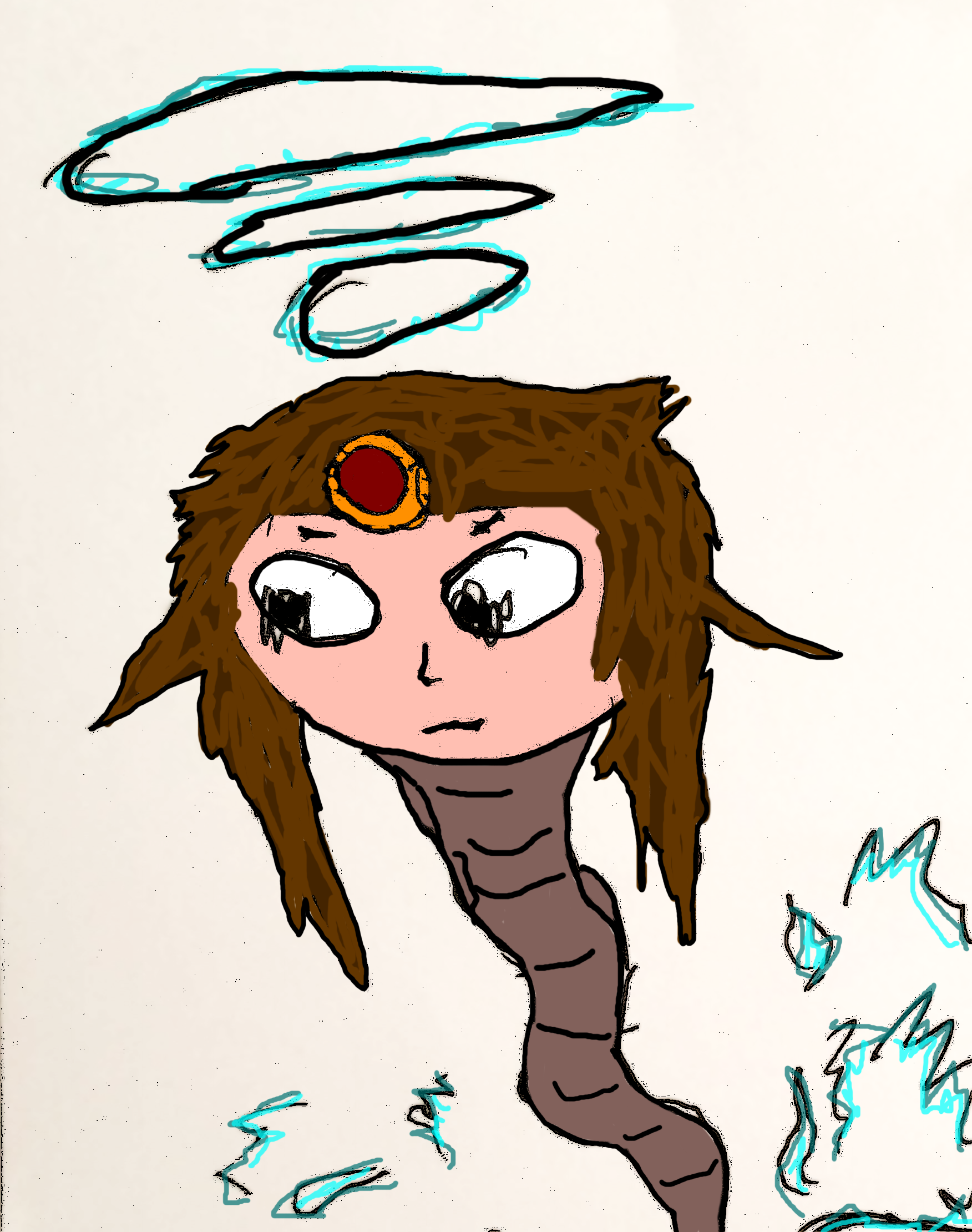I believe in socialism, but I feel Stalin shouldn’t be idolised due to things like the Gulag.
I would like more people to become socialist, but I feel not condemning Stalin doesn’t help the cause.
I’ve tried to have a constructieve conversation about this, but I basically get angry comments calling me stupid for believing he did atrocious things.
That’s not how you win someone over.
I struggle to believe the Gulag etc. Never happened, and if it happened I firmly believe Stalin should be condemned.
He was mostly alright, but his significance really comes from popularizing and formulating what is now known as Marxism-Leninism.
As a result of mounting internal and external pressure, as well as the power-struggle following Lenin’s death, Stalin had to make countless concessions to deal with problems that could not be avoided.
Because of his role leading a country that was led into, and greatly harmed by war (tens of millions of deaths as a result), it can be very challenging to get an appropriate critique and analysis of his role. You are not going to find any example of peaceful revolution, nor will you find any examples of countries in a state of war that can grant complete freedom and liberty.
I defend him to the extent that he led a struggle against European fascism, and I defend him against accusations that Marxism and fascism are the same. Going so far to condemn Stalin generally has a tendency to grant a certain level of forgivenes and apologia for fascists and their collaborators, as well as a wide assortment of reactionaries and nationalists.
When it comes to people who would be identified as “Stalinists”, usually what is meant is something more similar to what we would call National Bolsheviks (NazBols). If not that, then in reference to the tendency of certain Marxist-Leninist groups to justify social conservatism, petty nationalism, and premature centralization.
One thing I’d like to touch on: the experience of the Bolsheviks told us that we need unity of Marxists, where we exclude the distorters of Marx. If you want to be a Marxist, you need Marx - no way around that. Stalin had to read Marx’s major works, Lenin did so and more, and so did Trotsky, Luxembourg, even Kautsky and Bernstein.
Any major revolutionary figure is going to be smeared and distorted for someone else’s gain. People still hate Robespierre, for instance, and people still try to rewrite the narrative of people from Nat Turner to Huey P. Newton - Stalin was no different. You don’t have to defend him at all, nor do you have to condemn him (or any other historical figure), but you should at least understand the real Stalin and understand that the USSR was born out of the ashes of the Russian Empire - generally for worse as we came closer and closer to its dissolution. If you don’t care to catch the full story, you are going to be clueness when it comes to any revolutionary movement across the Americas, especially the US. You can try to overcorrect or overly emphasize how much you don’t like Stalin, if you’d like, but remember that Stalin’s opposition and the leftists who opposed the initial October Revolution were well on their way to make mistakes in the complete opposition direction - equally as harmful and destructive. That doesn’t make you superior, it makes you blind. Stalin’s errors were far from the only possibility.
It could’ve went way worse, or it could’ve been far better off - which would you prefer?
He killed communists and became the poster boy of red scare, hurting the progress of socialism by decades
He had a really big spoon.
highly recommend reading Losurdo’s Stalin: History and Critique of a Black Legend. it’s a very good historiography of stalin which dispels a lot of the western-propagated myths about his rule and the guy himself. near the end there’s a very enlightening section about why “condemning” communist leaders and figures as somehow aberrations of communism is a dangerous road to go down. Stalin was not an aberration of communism, he was trying his best to further the cause and by all accounts he did quite a good job. we can critique without performing such a binary disavowal, ultimately that is liberalism
Me to other Communists: Stalin was a complex character who did make mistakes, went too hard on some stuff and not hard enough on others, but overall was a force for good, and I can never fault him for leading the USSR in defeating the Nazis.
Me to libs: You will not talk badly about uncle Joe Steel, ender of the holocaust, killer of fascists, beacon of hope to the global south.
I would like more people to become socialist, but I feel not condemning Stalin doesn’t help the cause.
Constantly repudiating historical socialists for being the wrong type of socialist hurts the cause far more, and is exactly what the feds want you to do.
real lol, good post!
Yeah, I feel the same towards Stalin as I feel towards most figures and places that have been relentlessly smeared by Cold War and Red Scare propaganda.
And that is that the entire reason these figures are so viscously demonized is because capitalism cannot survive the threat of a good example. The ruling class needs the most radical allowable criticism of their system to be, “Sure, we have many faults, but all of the alternatives are far worse so you better not dare even thinking about fighting for positive change.”
That narrative can only function if every victory of the global proletariat is smeared as a dystopian hellscape ruled by cartoon villains. And I don’t think it’s to our benefit to cede that rhetorical ground wholesale out of fear that challenging it might be unpopular among Cold Warriors.
The gulag system was infinitely more humane than America’s prison system. They weren’t death camps, it’s difficult to understand what the stigma around them is other than the fact that they have a spooky Russian name. Prisoners were paid a full wage, and were permitted to leave the prisons for short times.
stalin was a good guy who was doing his best
This comically evil understanding of the Soviet prison system is based off only a handful of unreliable sources.
Robert Conquest’s The Great Terror (published 1968) laid the groundwork for Soviet fearmongering, and was based largely off defector testimony.
Robert Conquest worked for the British Foreign Office’s Information Research Department (IRD), which was a secret Cold War propaganda department, created to publish anti-communist propaganda, including black propaganda; provide support and information to anti-communist politicians, academics, and writers; and to use weaponized information and disinformation and “fake news” to attack not only its original targets but also certain socialists and anti-colonial movements.
He was Solzhenytsin before Solzhenytsin, in the phrase of Timothy Garton Ash.
The Great Terror came out in 1968, four years before the first volume of The Gulag Archipelago, and it became, Garton Ash says, “a fixture in the political imagination of anybody thinking about communism”.
- Andrew Brown. (2003). Scourge and poet
Aleksandr Solzhenitsyn’s The Gulag Archipelago (published 1973), one of the most famous texts on the subject, claims to be a work of non-fiction based on the author’s personal experiences in the Soviet prison system. However, Solzhenitsyn was merely an anti-Communist, Nazi-sympathizing, antisemite who wanted to slander the USSR by putting forward a collection of folktales as truth.
Anne Applebaum’s Gulag: A history (published 2003) draws directly from The Gulag Archipelago and reiterates its message. Anne is a member of the Council of Foreign Relations (CFR) and sits on the board of the National Endowment for Democracy (NED), two infamous pieces of the ideological apparatus of the ruling class in the United States, whose primary aim is to promote the interests of American Imperialism around the world.
However, in contrast to these depictions, we have this interesting report produced by the CIA regarding the nature of the gulags, or “Forced Labor Camps” as they describe them. Let’s take a second to note that this year, California voted to uphold their forced labor practices in the state, and that the US still maintains constitutionally protected forced labor as a form of punishment.
A 1957 CIA document [which was declassified in 2010] titled “Forced Labor Camps in the USSR: Transfer of Prisoners between Camps” reveals the following information about the Soviet Gulag in pages two to six:
- Until 1952, the prisoners were given a guaranteed amount food, plus extra food for over-fulfillment of quotas
- From 1952 onward, the Gulag system operated upon “economic accountability” such that the more the prisoners worked, the more they were paid.
- For over-fulfilling the norms by 105%, one day of sentence was counted as two, thus reducing the time spent in the Gulag by one day.
- Furthermore, because of the socialist reconstruction post-war, the Soviet government had more funds and so they increased prisoners’ food supplies.
- Until 1954, the prisoners worked 10 hours per day, whereas the free workers worked 8 hours per day. From 1954 onward, both prisoners and free workers worked 8 hours per day.
- A CIA study of a sample camp showed that 95% of the prisoners were actual criminals.
- In 1953, amnesty was given to 70% of the “ordinary criminals” of a sample camp studied by the CIA. Within the next 3 months, most of them were re-arrested for committing new crimes.
- Saed Teymuri. (2018). The Truth about the Soviet Gulag – Surprisingly Revealed by the CIA
In terms of scale, Solzhenitsyn estimated that over 66 million people were victims of the Soviet Union’s forced labor camp system over the course of its existence from 1918 to 1956. With the collapse of the USSR and the opening of the Soviet archives, researchers can now access actual archival evidence to prove or disprove these claims. Predictably, it turned out the propaganda was just that.
Unburdened by any documentation, these “estimates” invite us to conclude that the sum total of people incarcerated in the labor camps over a twenty-two year period (allowing for turnovers due to death and term expirations) would have constituted an astonishing portion of the Soviet population. The support and supervision of the gulag (all the labor camps, labor colonies, and prisons of the Soviet system) would have been the USSR’s single largest enterprise.
In 1993, for the first time, several historians gained access to previously secret Soviet police archives and were able to establish well-documented estimates of prison and labor camp populations. They found that the total population of the entire gulag as of January 1939, near the end of the Great Purges, was 2,022,976. …
Soviet labor camps were not death camps like those the Nazis built across Europe. There was no systematic extermination of inmates, no gas chambers or crematoria to dispose of millions of bodies. Despite harsh conditions, the great majority of gulag inmates survived and eventually returned to society when granted amnesty or when their terms were finished. In any given year, 20 to 40 percent of the inmates were released, according to archive records. Oblivious to these facts, the Moscow correspondent of the New York Times (7/31/96) continues to describe the gulag as “the largest system of death camps in modern history.” …
Most of those incarcerated in the gulag were not political prisoners, and the same appears to be true of inmates in the other communist states…
- Michael Parenti. (1997). Blackshirts & Reds: Rational Fascism and the Overthrow of Communism
This is 2 million out of a population of 168 million (roughly 1.2% of the population). For comparison, in the United States, “over 5.5 million adults — or 1 in 61 — are under some form of correctional control, whether incarcerated or under community supervision.” That’s 1.6%. So in both relative and absolute terms, the United States’ Prison Industrial Complex today is larger than the USSR’s Gulag system at its peak.
Regarding the “death rate”, In peace time, the mortality rate of the Gulag was around 3% to 5%. Even Conservative and anti-Communist historians have had to acknowledge this reality:
It turns out that, with the exception of the war years, a very large majority of people who entered the Gulag left alive…
Judging from the Soviet records we now have, the number of people who died in the Gulag between 1933 and 1945, while both Stalin and Hitler were in power, was on the order of a million, perhaps a bit more.
- Timothy Snyder. (2010). Bloodlands: Europe Between Hitler and Stalin
(Side note: Timothy Snyder is also a member of the Council on Foreign Relations)
This is still very high for a prison mortality rate, representing the brutality of the camps. However, it also clearly indicates that they were not death camps.
Nor was it slave labor, exactly. In the camps, although labor was forced, it was not uncompensated. In fact, the prisoners were paid market wages (minus expenses).
We find that even in the Gulag, where force could be most conveniently applied, camp administrators combined material incentives with overt coercion, and, as time passed, they placed more weight on motivation. By the time the Gulag system was abandoned as a major instrument of Soviet industrial policy, the primary distinction between slave and free labor had been blurred: Gulag inmates were being paid wages according to a system that mirrored that of the civilian economy described by Bergson…
The Gulag administration [also] used a “work credit” system, whereby sentences were reduced (by two days or more for every day the norm was overfulfilled).
- L. Borodkin & S. Ertz. (2003). Compensation Versus Coercion in the Soviet GULAG
We can comb over the details all you want, but I don’t think you care about the details. You are looking to reinforce your own personal bias, not correct it. You are not taking an objective and materialist view of history regarding the Stalin era of the USSR. Not even, at a minimum, drawing comparisons between the prisons in the Soviet Union and the current for-profit systems that exist today in America.
All this effort in this post will go on to be wasted, I feel. I do it, though because your post will attract others with similar questions, and hopefully those more willing to deprogram themselves will read it and do more investigating.
You’re not going to build a socialist movement if you build it off the back of Cold War era red scare propaganda. You came to us with a simple question, and to fully understand the answer, you need to read more and deprogram yourself.
 great post!
great post!GOOD post!
 10·20 hours ago
10·20 hours agoUntil 1954, the prisoners worked 10 hours per day, whereas the free workers worked 8 hours per day. From 1954 onward, both prisoners and free workers worked 8 hours per day.
While he is at this labor, the convict works under the same conditions, and with the same protections that he would enjoy in outside labor. His hours are seven or eight a day, depending upon the nature of his work
Did it change between 1935 and 1954? Are Callcott and the CIA talking about different things? Genuine question, I wish to know.
So I think the CIA is talking about specific camps, and it could be possible that these camps were operating different working hours, but maybe what Callcott is describing is an average or generalized notion of an eight-hour day across the entire system. From the first page of the CIA report, section (2), subsection (a), it states:
Forced Labor Camps ia the USSR: This six-page report provides detailed information on the organization of labor camps and on working and living conditions in camps the area of Bratsk (N 56-02, E 101-4O) and Tayshet (N 55-57, E 96-02) in Irkutsk Oblast. The bulk of this information concerns Ozerlag, [ REDACTED ] Other camps described In the report are Kraslag near Tayshet, Minlag in the Vorkuta area, and Vyatlag rear Verkhne-Kansk in Kirov Oblast.
So these camps might have been operating 10 hours days for a reason, and then changed that policy later.
Good: industrialized a poor country under extremely difficult conditions, maintained the integrity of the socialist project, defeated the Nazis, supported China and the DPRK
Bad: forced relocation of ethnic minorities, imposed sedentism on nomadic and semi-nomadic groups, betrayed and isolated Yugoslavia
For starters, “Gulag” just means “prison.” Of course prisons existed in the USSR, and some had rather brutal conditions. Others, however, did not, and treated prisoners better to much better than your average American prison. Nobody is saying the Gulags never existed, perhaps they mean your specific interpretation of the conditions of gulags and the extent to which they were used. Edit 1
As for Stalin himself, it’s fair to say he committed a fair degree of errors in judgement, had reactionary social views such as his view of homosexuality, was frequently paranoid, and so forth. At the same time, it is equally fair to understand that Stalin has been the subject of countless lies, exaggerations, myths, and other degrees of Cold War propaganda we learn as fact despite evidence to the contrary, especially following the opening of the Soviet Archives. Moreover, it is necessary to acknowledge the vital role he played in governing the worlds first Socialist State, and building the foundations of this rapid improvement on the utter squalor of the Tsarist regime.
Should Stalin be idolized? I don’t think so, as I believe that can get in the way of accurate analysis. Should Stalin be villianized and made a scapegoat to brush the Red Scare under the rug? I don’t believe so, either. The USSR came with countless benefits, from a doubling of life expectancy to free healthcare to near 100% literacy rates (better than the modern US), and more. These benefits were formed under Stalin, and as such we must do our absolute best to separate fact from fiction. If we accept and push purely the accepted bourgeois narrative regarding the real experience of AES states, then we cannot learn from them properly and sort out what worked and what did not.
Basically, Stalin was neither a perfect saint devoid of mistakes nor a unique monster that should be especially condemned. He was the leader of the USSR, but did not have absolute control, and in addition was in many ways less monstrous than contemporary leaders such as Hitler and Churchill. Correct contextualization is important. I highly recommend the short, 8 minute article “Tankies” by Roderic Day, hosted over on Red Sails. For more in-depth reading, Stalin: History and Critique of a Black Legend by Domenico Losurdo is a good historical critique of Stalin that focuses on taking a critical stance towards Stalin and contextualizes him.
Edit 1: seeing your other two comments, I am now entirely certain that this is the case.
 20·22 hours ago
20·22 hours agoAs always, I have a book that I wish to quote from, but I cannot choose which parts, so I’ll just point to Russian Justice if anyone is interested.
For a shorter read see Chapter 14 in This Soviet World
Excellent work, comrade 🫡
Thanks, this is the kind of response I was looking for. I’ll look into what you said further.
With the image that Stalin has in the west, I think it alienates people when he’s not condemned. I can’t think of a singe leader that we should praise (Mandela maybe?) if anything we should praise ideas not people.
people need to be educated not coddled. conceding to and legitimising liberal/right wing revisionist history is a strategic error for any communist or communist movement.
If you don’t directly challenge false, bourgeois narratives, then they are used as ammo against related subjects. “Stalin was a butcher of 100 million,” if accepted, means the Soviet Union was a horrible failure as well. This means Socialism was a horrible failure in the Soviet Union. This cascading power of bourgeois narratives prevents real radicalization, and moreover allows repitition of failures if not properly analyzed.
Take another example. Stalin synthesized Marxism-Leninism. As a Marxist-Leninist, there is no avoiding Stalin when talking with liberals. Because of my belief that Marxism-Leninism is correct, I cannot avoid the topic of grappling with Stalin’s existence.
As Marx said, “The tradition of all dead generations weighs like a nightmare on the brains of the living.”
I think you hit the nail on the head with this comment. Stalin was a very influential man who shaped large part of the 20th century. Villanizing or idolizong his achievements without acknowledging the other side of the coin would be having an incorrect outlook on him.
I took a quick read of the link describing tankies. It more or less echoes what you said. That being said my observation of the use of the word tankie doesn’t fall in line with what the author was talking about. I’ve seen it used primarily for people who staunchly or blindly defend figures like Stalin and are incapable of acknowledging any criticisms of said figures. What yoyre describing is more of a lefty or a socialist in my opinion. The article was written in 2020 so maybe the use of the word has evolved over time. I haven’t been familiar with the word for that long to say otherwise.
Regarding the term “tankie,” I actually disagree with what you’re saying here. The term “tankie” is described to mean what you say, but the term is applied to people with the same analysis as myself, Roderic Day, and others who defend AES. I’ve even seen Anarchists labeled “tankie.” The reason the word “tankie” is used is because it allows the thrower to terminate the conversation and misrepresent the accused as having all of the blind, dogmatic sins the term itself has been associated with, regardless of the actual bearings of the conversation at play.
The quantity of people who actually fit the term “tankie” is miniscule compared to the quantity the word is thrown at with regularity.
That sounds to me like you were just dealing with bad faith actors, which isn’t uncommon here unfortunately.
I think we both agree on what it’s intended use is meant to be for. I guess you’ve just had the misfortune of dealing with people misusing the label to shut down any actual discussion.
What I am describing is by far the most common usage of the term I have seen, to the point that it might as well be the only usage. The intended usage of “tankie” has become weaponized discussion-avoidance and serves as a cheap copout to prevent tackling uncomfortable topics.
You are factually incorrect in the very first statement. “Gulag” means “главное управление исправительно-трудовых лагерей” and is a name of a state agency directly operating a network of concentration/forced labor camps. Each of the camps had their name, control and command structures and operated under direct oversight of some best Stalin’s chaps.
Also, it wasn’t just ‘prison’. Each of them was a concentration camp for politically it otherwise unsound elements, that provided Stalin with supply of free slave labor.
Also, it wasn’t just ‘prison’. Each of them was a concentration camp for politically it otherwise unsound elements
“It wasn’t a prison! It was [definition of prison]”
I’ll direct you to @RedWizard@hexbear.net in his comment here going over the Soviet prison system, along with myth-dispelling surrounding the Soviet prison labor system.
You didn’t need to direct me anywhere to accept that you made a clear factual mistake.
This comically evil understanding of the Soviet prison system is based off only a handful of unreliable sources.
Robert Conquest’s The Great Terror (published 1968) laid the groundwork for Soviet fearmongering, and was based largely off defector testimony.
Robert Conquest worked for the British Foreign Office’s Information Research Department (IRD), which was a secret Cold War propaganda department, created to publish anti-communist propaganda, including black propaganda; provide support and information to anti-communist politicians, academics, and writers; and to use weaponized information and disinformation and “fake news” to attack not only its original targets but also certain socialists and anti-colonial movements.
He was Solzhenytsin before Solzhenytsin, in the phrase of Timothy Garton Ash.
The Great Terror came out in 1968, four years before the first volume of The Gulag Archipelago, and it became, Garton Ash says, “a fixture in the political imagination of anybody thinking about communism”.
- Andrew Brown. (2003). Scourge and poet
Aleksandr Solzhenitsyn’s The Gulag Archipelago (published 1973), one of the most famous texts on the subject, claims to be a work of non-fiction based on the author’s personal experiences in the Soviet prison system. However, Solzhenitsyn was merely an anti-Communist, Nazi-sympathizing, antisemite who wanted to slander the USSR by putting forward a collection of folktales as truth.
Anne Applebaum’s Gulag: A history (published 2003) draws directly from The Gulag Archipelago and reiterates its message. Anne is a member of the Council of Foreign Relations (CFR) and sits on the board of the National Endowment for Democracy (NED), two infamous pieces of the ideological apparatus of the ruling class in the United States, whose primary aim is to promote the interests of American Imperialism around the world.
However, in contrast to these depictions, we have this interesting report produced by the CIA regarding the nature of the gulags, or “Forced Labor Camps” as they describe them. Let’s take a second to note that this year, California voted to uphold their forced labor practices in the state, and that the US still maintains constitutionally protected forced labor as a form of punishment.
A 1957 CIA document [which was declassified in 2010] titled “Forced Labor Camps in the USSR: Transfer of Prisoners between Camps” reveals the following information about the Soviet Gulag in pages two to six:
- Until 1952, the prisoners were given a guaranteed amount food, plus extra food for over-fulfillment of quotas
- From 1952 onward, the Gulag system operated upon “economic accountability” such that the more the prisoners worked, the more they were paid.
- For over-fulfilling the norms by 105%, one day of sentence was counted as two, thus reducing the time spent in the Gulag by one day.
- Furthermore, because of the socialist reconstruction post-war, the Soviet government had more funds and so they increased prisoners’ food supplies.
- Until 1954, the prisoners worked 10 hours per day, whereas the free workers worked 8 hours per day. From 1954 onward, both prisoners and free workers worked 8 hours per day.
- A CIA study of a sample camp showed that 95% of the prisoners were actual criminals.
- In 1953, amnesty was given to 70% of the “ordinary criminals” of a sample camp studied by the CIA. Within the next 3 months, most of them were re-arrested for committing new crimes.
- Saed Teymuri. (2018). The Truth about the Soviet Gulag – Surprisingly Revealed by the CIA
In terms of scale, Solzhenitsyn estimated that over 66 million people were victims of the Soviet Union’s forced labor camp system over the course of its existence from 1918 to 1956. With the collapse of the USSR and the opening of the Soviet archives, researchers can now access actual archival evidence to prove or disprove these claims. Predictably, it turned out the propaganda was just that.
Unburdened by any documentation, these “estimates” invite us to conclude that the sum total of people incarcerated in the labor camps over a twenty-two year period (allowing for turnovers due to death and term expirations) would have constituted an astonishing portion of the Soviet population. The support and supervision of the gulag (all the labor camps, labor colonies, and prisons of the Soviet system) would have been the USSR’s single largest enterprise.
In 1993, for the first time, several historians gained access to previously secret Soviet police archives and were able to establish well-documented estimates of prison and labor camp populations. They found that the total population of the entire gulag as of January 1939, near the end of the Great Purges, was 2,022,976. …
Soviet labor camps were not death camps like those the Nazis built across Europe. There was no systematic extermination of inmates, no gas chambers or crematoria to dispose of millions of bodies. Despite harsh conditions, the great majority of gulag inmates survived and eventually returned to society when granted amnesty or when their terms were finished. In any given year, 20 to 40 percent of the inmates were released, according to archive records. Oblivious to these facts, the Moscow correspondent of the New York Times (7/31/96) continues to describe the gulag as “the largest system of death camps in modern history.” …
Most of those incarcerated in the gulag were not political prisoners, and the same appears to be true of inmates in the other communist states…
- Michael Parenti. (1997). Blackshirts & Reds: Rational Fascism and the Overthrow of Communism
This is 2 million out of a population of 168 million (roughly 1.2% of the population). For comparison, in the United States, “over 5.5 million adults — or 1 in 61 — are under some form of correctional control, whether incarcerated or under community supervision.” That’s 1.6%. So in both relative and absolute terms, the United States’ Prison Industrial Complex today is larger than the USSR’s Gulag system at its peak.
Regarding the “death rate”, In peace time, the mortality rate of the Gulag was around 3% to 5%. Even Conservative and anti-Communist historians have had to acknowledge this reality:
It turns out that, with the exception of the war years, a very large majority of people who entered the Gulag left alive…
Judging from the Soviet records we now have, the number of people who died in the Gulag between 1933 and 1945, while both Stalin and Hitler were in power, was on the order of a million, perhaps a bit more.
- Timothy Snyder. (2010). Bloodlands: Europe Between Hitler and Stalin
(Side note: Timothy Snyder is also a member of the Council on Foreign Relations)
This is still very high for a prison mortality rate, representing the brutality of the camps. However, it also clearly indicates that they were not death camps.
Nor was it slave labor, exactly. In the camps, although labor was forced, it was not uncompensated. In fact, the prisoners were paid market wages (minus expenses).
We find that even in the Gulag, where force could be most conveniently applied, camp administrators combined material incentives with overt coercion, and, as time passed, they placed more weight on motivation. By the time the Gulag system was abandoned as a major instrument of Soviet industrial policy, the primary distinction between slave and free labor had been blurred: Gulag inmates were being paid wages according to a system that mirrored that of the civilian economy described by Bergson…
The Gulag administration [also] used a “work credit” system, whereby sentences were reduced (by two days or more for every day the norm was overfulfilled).
- L. Borodkin & S. Ertz. (2003). Compensation Versus Coercion in the Soviet GULAG
We can comb over the details all you want, but I don’t think you care about the details. You are looking to reinforce your own personal bias, not correct it. You are not taking an objective and materialist view of history regarding the Stalin era of the USSR. Not even, at a minimum, drawing comparisons between the prisons in the Soviet Union and the current for-profit systems that exist today in America.
All this effort in this post will go on to be wasted, I feel. I do it, though because your post will attract others with similar questions, and hopefully those more willing to deprogram themselves will read it and do more investigating.
You’re not going to build a socialist movement if you build it off the back of Cold War era red scare propaganda. You came to us with a simple question, and to fully understand the answer, you need to read more and deprogram yourself.
The Gulag system was the Prison system of the USSR for much of its existence. No, it did not translate directly into “prison,” but that doesn’t change that it was the prison system, and moreover the conditions of many gulags were favorable compared to American prisons. It’s worth reading RedWizard’s comment because he dispelled a lot of the myths you perpetuate.
Removed by mod
Your comment consists of 0 facts, an ableist slur, and a recommendation to watch a work of fiction designed specifically to push an anticommunist narrative. Moreover, the assertion that I must not have read is silly, I linked an article and a full history book in my comment, and have a Marxist reading list linked on my profile with a mix of theory and historical texts. Why would anyone take what you have said seriously?
If you really want to understand communism, watch G.P.U. I guarantee that by the ending, you’ll revise every single thing with which your cultural Marxist masters indoctrinated you.
Never knew about that, I’m morbidly curious. Thanks for the post!
tl;dr there’s no response here it’s 100% reaction mugging
Wrong. Read books
I want a discussion. It shouldn’t be that hard to explain.
I’m not going to convince you of Christianity by saying.
Wrong, go read the bible. It’s not that simple.
They’re inviting you to read history, not claims of the supernatural. Most of us arrived at our more reasonable assessments of the Stalin administration by studying mature works of history. If you are expecting somebody to spend only a couple minutes refuting decades of Cold War propaganda then you are unlikely to find much help anywhere.
I just wanted a discussion or good starting point Cowbee has already provided that
I do recommend reading the history books provided, however. I fully back what my comrades here have suggested, and don’t want to take away from their inputs on the matter. Rather, I endorse them, and think the idea of comparing theology to history when it comes to the notion of research is rather rude.
I think that simply saying “wrong” was rude as well; responses like that can alienate people.
Your top-level comment is a great example of how it should be done 🙂
While I agree, I don’t fault comrades for being short of patience when combatting the same mistaken notions repeatedly. I take breaks frequently from Lemmy as a consequence.
Comparing theological work to historiographical work is a logical fallacy.
Asking for a discussion of a topic one is ignorant on isn’t asking for to be persuaded on it, its asking for opinions that may or may not be correct then cherry picking the answers that best suit one’s biased perspectives.
Asking you to do the most barest amount of research on a complex topic before trying to engage in it is to do you a favor of giving you the opportunity to arm yourself with concrete knowledge that you can then concretely be compare and contrast to the knowledge of others instead of asking for ephemeral platitudes that are fluffed to appear full in content but will starve your mind of substance
70% good 30% bad
Care to elaborate?
This was said by Deng Xiaoping about Mao regarding the mistakes of the Great Leap Forward and the Cultural Revolution. It is the official party line of the CPC.
Me and others think it fits well with Stalin
From what I understand, people who were sent to Gulag mostly were Nazis, bourgeoisie (basically people like the UnitedHealthcare CEO) and counter-revolutionaries.
I’m not saying it was the best way to seize resources from the rich and prevent counter-revolution. Some of the things he did were good, and some were bad.
How do you define what a Nazi is?
Do counter revolutionaries deserve to be sent to worker camps where the conditions are so bad many die?
“Send people who don’t agree with my world view to worker camps” Doesn’t feel like a good thing
How do you define what a Nazi is?
Are you part of the Canadian parliament, per chance?
We’re talking about WWII, so actual Nazi’s. You define them by the uniforms they wore and the allegiances they swore, it’s not some mystery.
How do you define what a Nazi is?
sophistry, and the more sophistry there is the more my
 beeps
beepsHow do you define what a Nazi is?
This is an odd question in the context of the USSR and WWII. It’s not like we’re debating about Milo Yiannopoulos on Twitter and whether it’s correct to call him a Nazi because technically he wasn’t a member of the party from the early 20th century. “Nazis” here refers to members of the Wehrmacht and the Nazi party. It may also include, as a shorthand, people who were not formally party of the Nazi party but provided material aid to the Nazis. That’s treason in any country, especially during wartime.
Do counter revolutionaries deserve to be sent to worker camps where the conditions are so bad many die?
No. To the extent that imprisoning people is necessary, they deserve humane conditions. The goal should be rehabilitation, but that’s not possible in all circumstances. It’s my understanding that the harsh conditions of Soviet prisons were largely due to wartime scarcity and improved as time went on.
“Send people who don’t agree with my world view to worker camps” Doesn’t feel like a good thing
“disagreeing with my world view” is a weird way to say “stealing vast swaths of wealth” or “enslaving people” or “invading a sovereign nation” or “committing mass murder of Jews, Romani, queer people, and socialists”. I’m not going to pretend that 100% of Soviet prisoners deserved to be there or that everyone who died deserved to die. For example, the USSR was very progressive on queer issues at its inception, but Stalin later criminalized homosexuality. That was clearly wrong. But to act like the entire system was a systemic way to imprison people for thought crimes is disingenuous. Probably not your intention, but rather because that’s the framing of decades of propaganda surrounding Soviet prisons.
After WW2 when the whole country was experiencing a mass casualty event caused by Nazis (defined as members or supporters of the NSDAP and their political project, or anyone who materially supported them even if they later professed to be ideologically opposed to them, since I guess “what’s a Nazi, exactly” is something you want to nitpick about), prisoner death rates were very high. Again, free civilian and soldiers’ death rates were also very high. There was limited food and Nazis were killing everyone.
Once the Soviets had a few years of industrialized society during which nobody was trying to commit a genocide against them, death rates in prison plummeted. I reject the idea that “gulags” are different in a meaningful way from prisons as understood by most modern westerners.
Do counter revolutionaries deserve to be sent to
Which government are you aware of that doesn’t imprison those actively working to overthrow their government?
Unfortunately, Moscow, because of the stressful conditions of the 1930s and the fear of an anticommunist reinvasion, did indeed cause collateral damage in some of its attempts to suppress counterrevolutionaries. Such overreactions are the inevitable consequences of a revolution regardless of it agenda. Even so, the way that Moscow handled disagreements was complex.
There is more that I could add, but I don’t see the point.
From my limited understanding Stalin tried to change things too fast. A comparison that would piss everyone off is like Elon Musk going all-in on robotics in an underdeveloped country.
In the long term Stalins policies paid off, but a lot of people starved because as it turns out putting all your points in technology means you don’t have farms.
Gulagging bourgeoisie also isn’t bad per se. But Stalin definitely sacraficed innocent people in the crossfire.
he was s power hungry megalomaniac that felt no shame in killing anyone who crossed him
When you get your politics from Marvel movies
The man tried to resign four times. It always was denied.
Trotsky and Bukharin constantly crossed him and he let them until hey tried to murder him. Hell, he defended Bukharin even then.
In short you are off by several universes.













